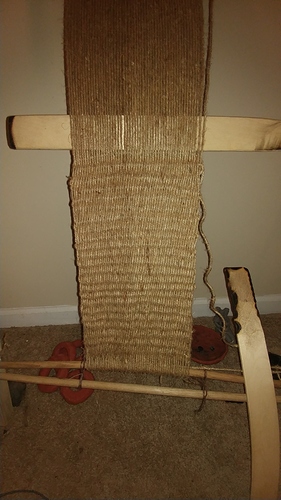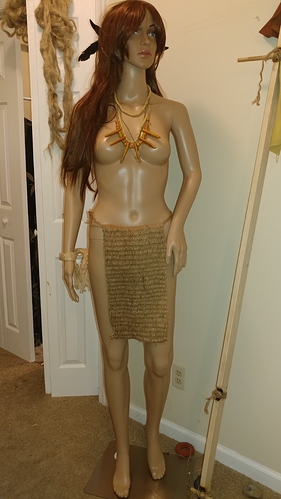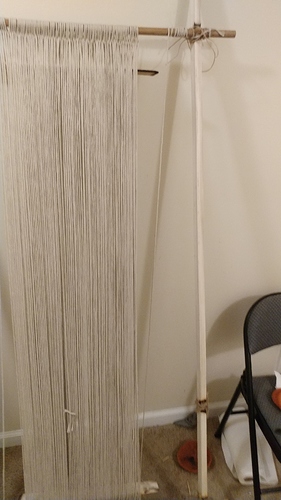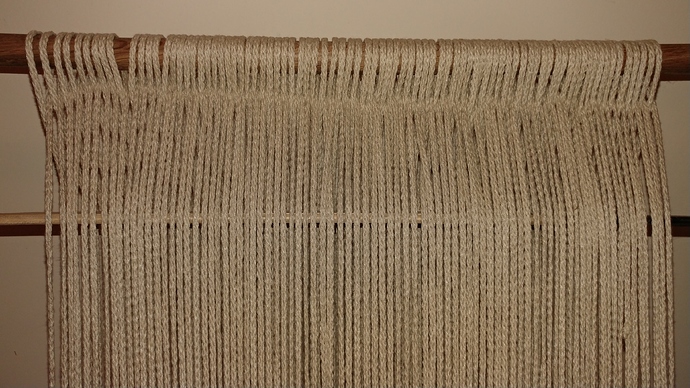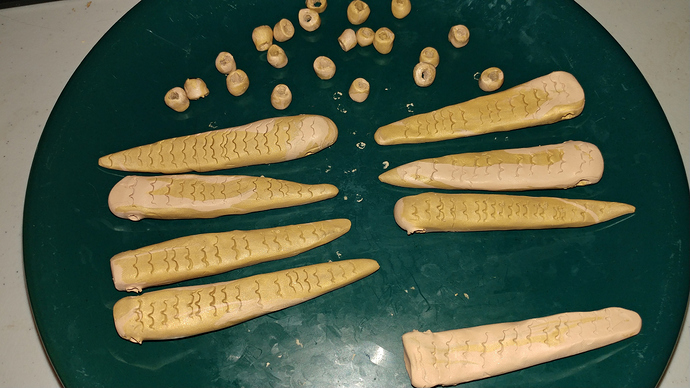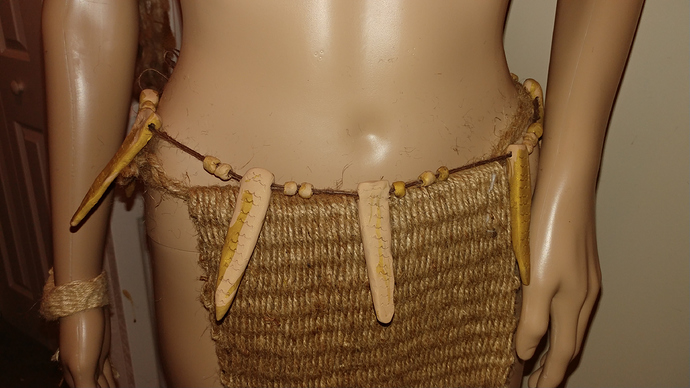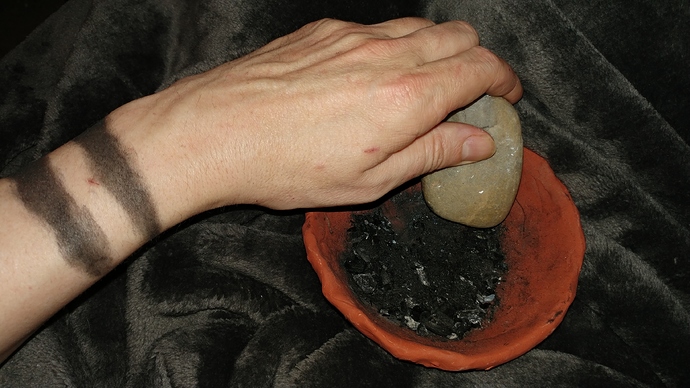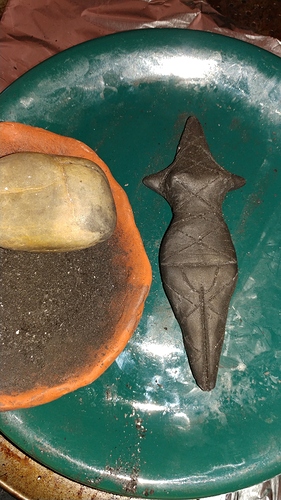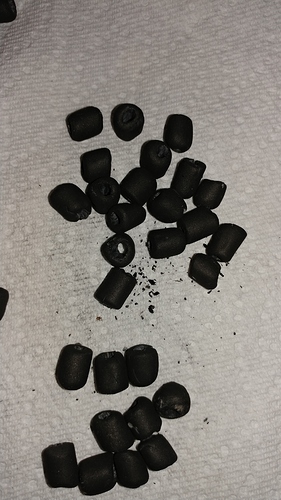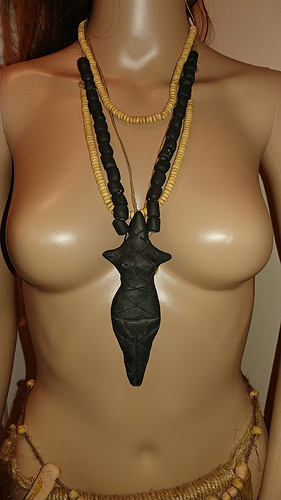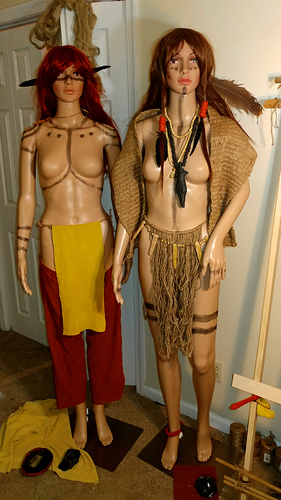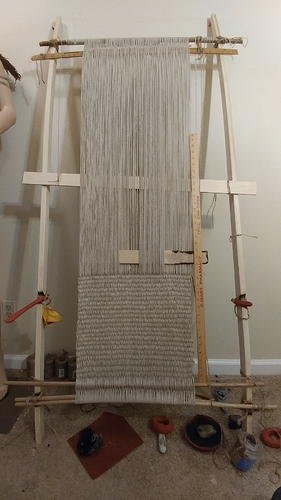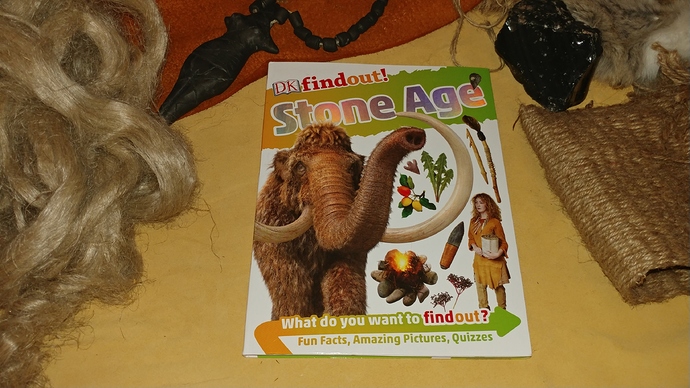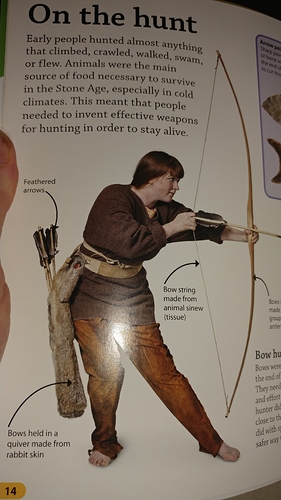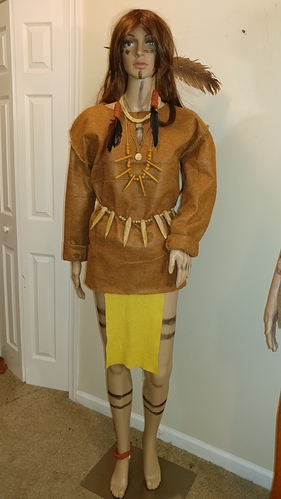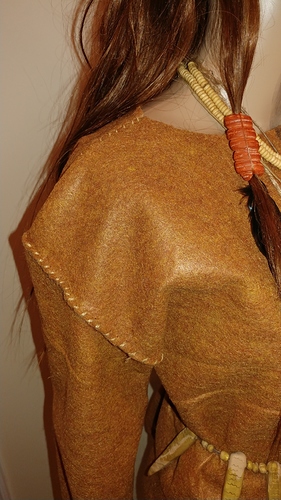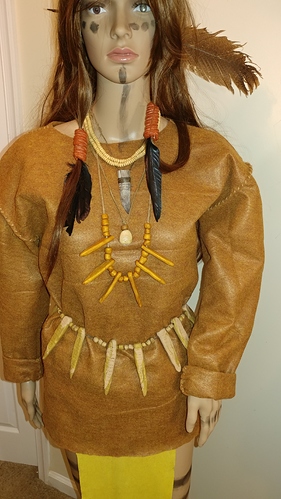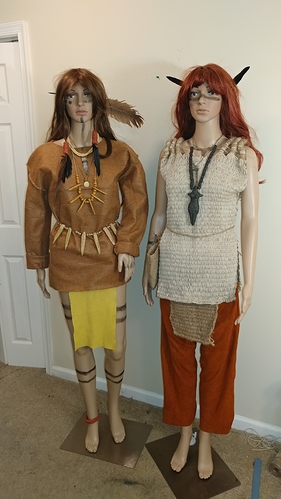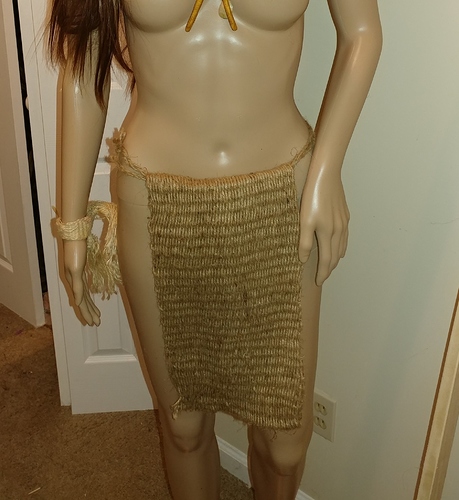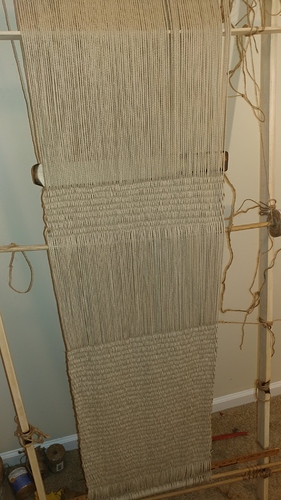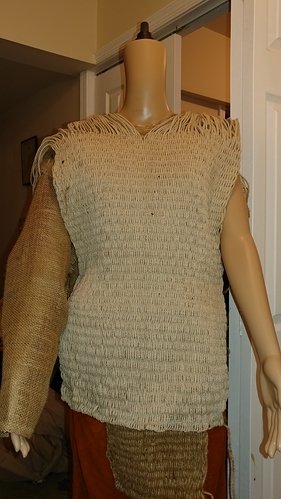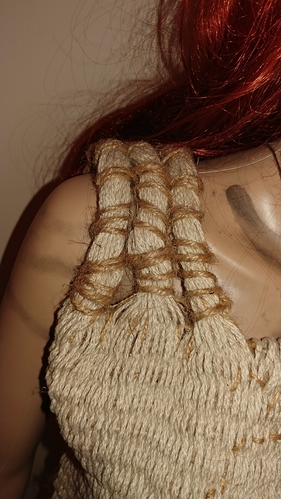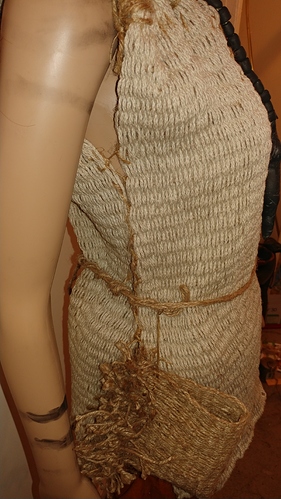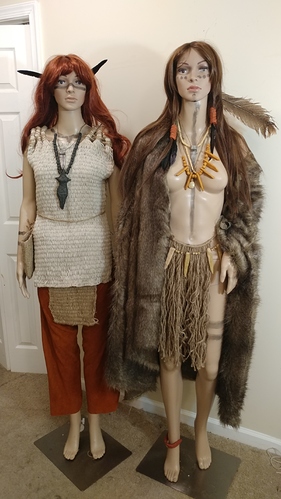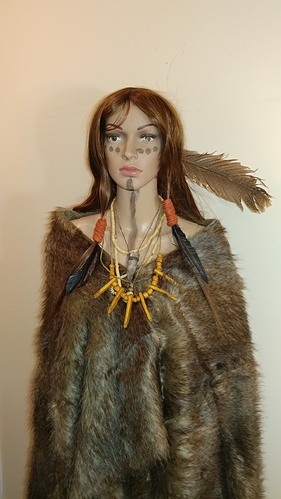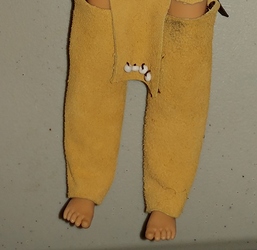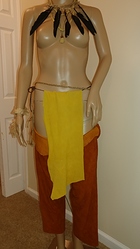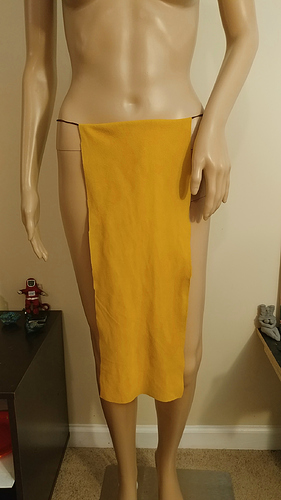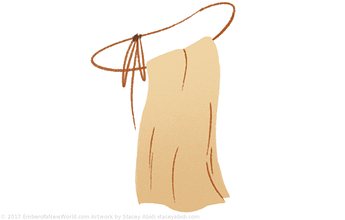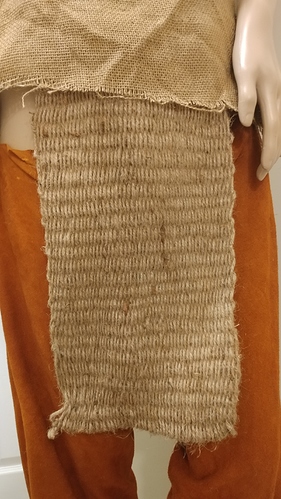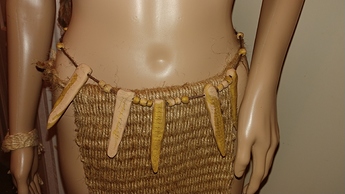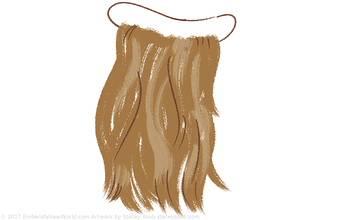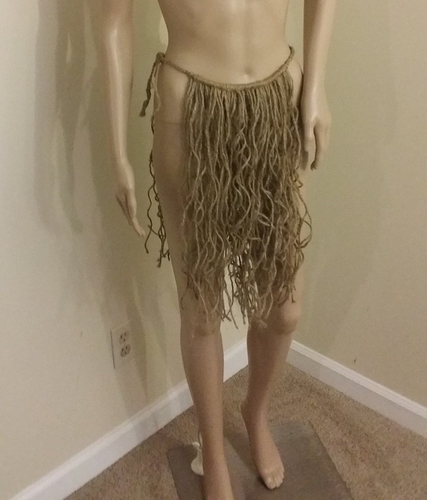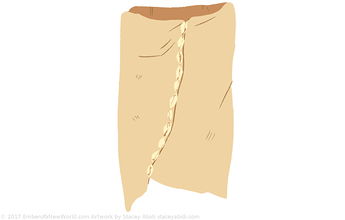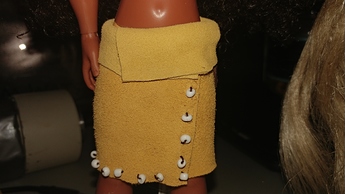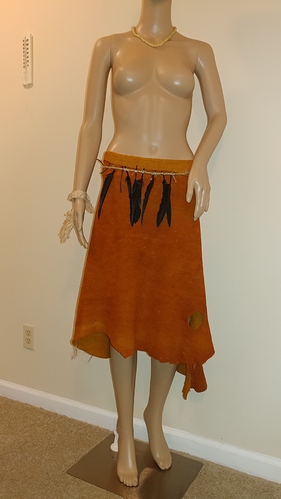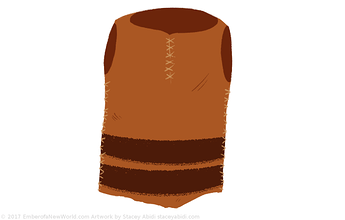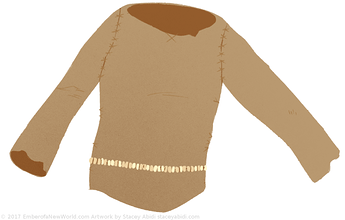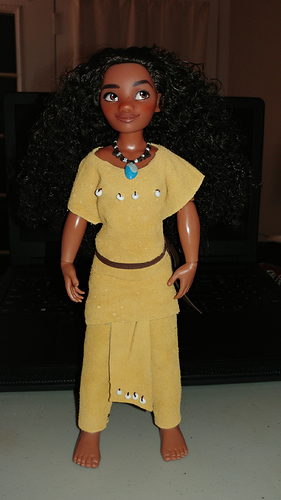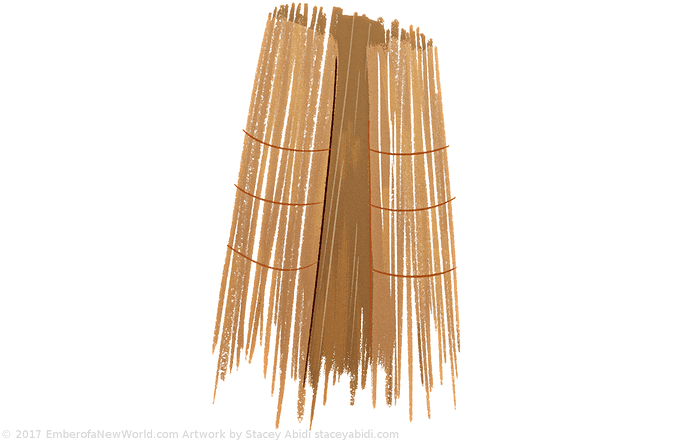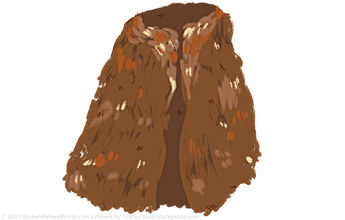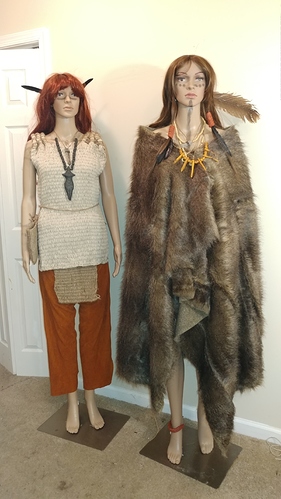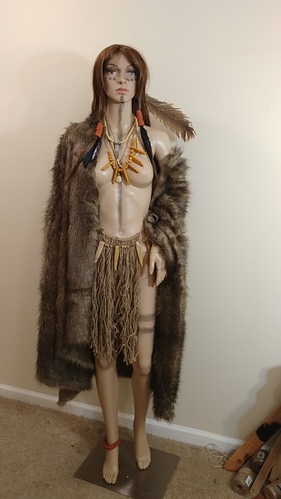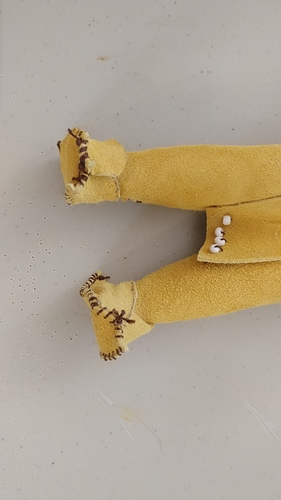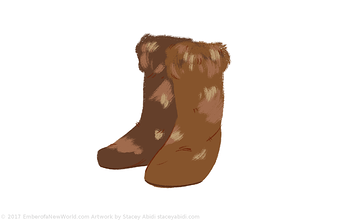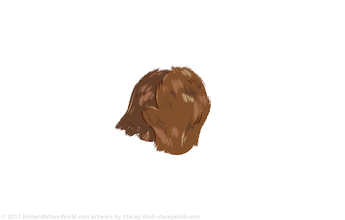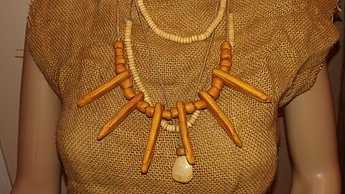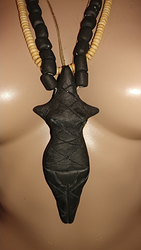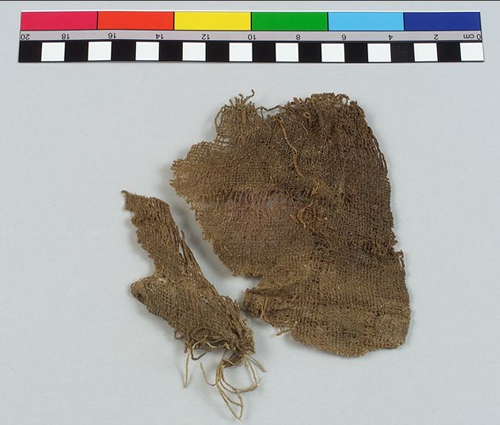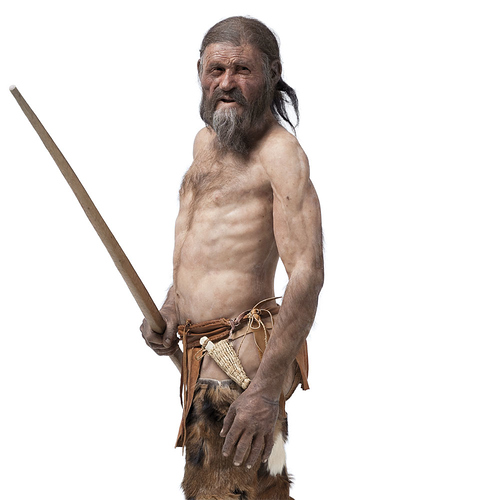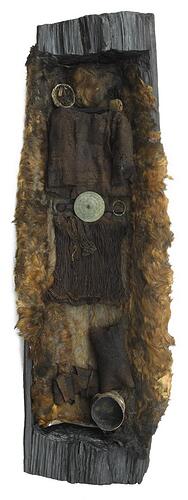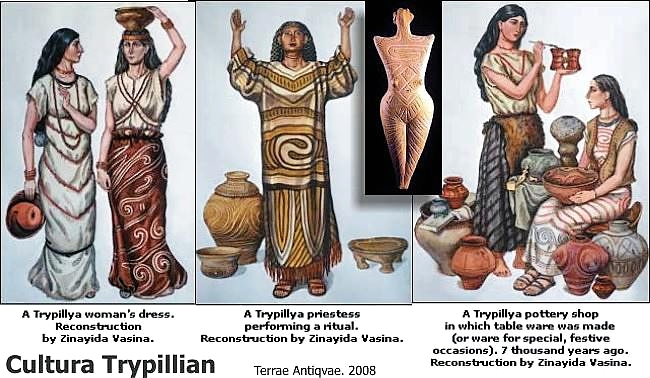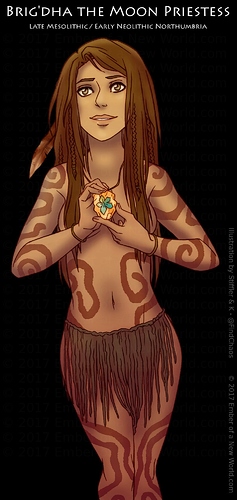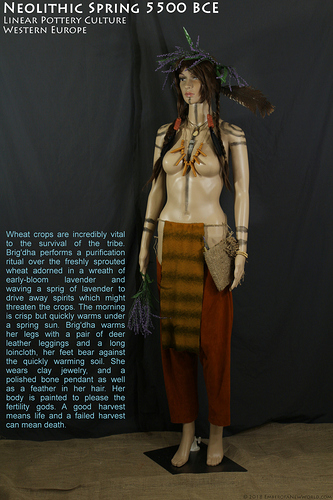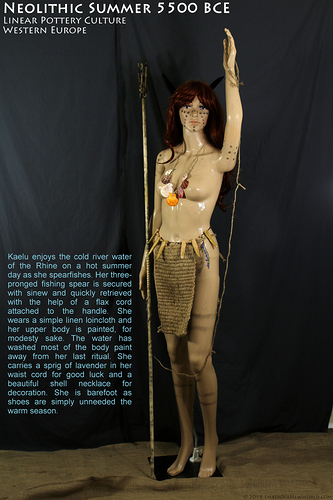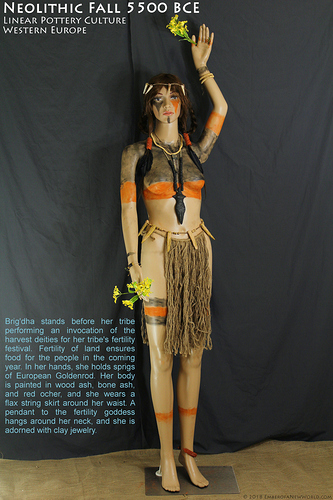Neolithic Clothing - So Far
I have compiled a list of the majority of clothing I have created so far. This clothing is set for the early Western European Neolithic, but some of it may have been used as early as the Mesolithic and as late as the early Bronze Age, depending on the item.
Neolithic clothing was rather complex and diverse. Clothing ranged from simple leather garments to extremely complex woven cloth. Whole panels of cloth were woven using weighted looms allowing for the creation of more sophisticated clothing, such as shawls, skirts, and perhaps even rudimentary dresses. The amount of time required to make even a single square meter of cloth could be quite extreme, as was the amount of time needed to grow the plants which made the fibers used in the cloth. As a result, good quality clothing would be worth a significant value in trade. It is important to consider all of the common forms of Neolithic clothing, not just the basic leather tunic.
Far from simple leather, Neolithic clothing was likely highly decorated with paint, shells and beads. Humans are very artistic and this artistic nature was probably displayed commonly in our clothing, as well as body decorations, such as body paint and feathers.
Some common items:
Leather leggings
Made from either single panels of leather or many small panels sewn together, leather leggings keep the legs warm and protect them from shrubbery, serving the role pants would eventually occupy.
Full size examples made from deer suede leather, 24″ long.
Breechcloth
As the name suggests, the breechcloth covers the opening (the breach) Between leather leggings, pants not having been created yet. While similar to the loincloth, the breechcloth differs in that it is typically longer, wider and often paired with leather leggings. While it could be cloth, during the Neolithic it would more likely be leather.
Examples made from deer suede leather, 60″ long.
Loincloth
The basic loincloth ties to the back of a waist cord with the excess material hanging over the front. They could be many lengths and made of many materials, from basic woven cloth to leather. The loincloth is perhaps the most ancient garment of humanity, worn by all peoples at one time or another.
The loincloth in this example is made of woven linen.
String skirt
A simple skirt made from individual threads of flax, cotton or other Bast fibers hung around the waist for the purposes of modesty. While not the most covering of items, it provided basic modesty while keeping the wear cool on hot summer days. String skirts, and especially symbolic garments of similar construction, had been used all the way up to modern times in Europe (e.g. The Egtved Girl).
Made from hundreds of hand-spun flax strings.
Leather skirt
A simple wrap of leather hide around the waist, either tucked in or bound with a waist cord. This provided substantial protection and warmth for the wearer, a must in cold European spring and fall. During the winter, a breechcloth and leggings may have been supplemented by leather skirt for additional warmth.
Made from a single piece of deer suede leather and decorated with little bone beads, this tiny reproduction of the leather skirt keeps the doll warm on an early spring day.
The larger example is a full sized skirt made from a single piece of deer suede.
Vest (Leather or Cloth)
A leather, for or cloth top piece protecting the upper body from cool air and the sun. Sleeves are not needed until the temperature becomes very cold, and they add additional complexity to an already complex garment. While the picture depicts a well formed vest, and almost smock-like shape would probably have been more common, a vest, like the picture, being very high-quality
This vest is made of extra thick flax cord woven into linen. It is extra rugged.
Shirt - Leather / Felt / Cloth
A full upper garment shirt. Unlike a leather vest, the shirt contains sleeves and a significantly more covering. The shirt in the picture is decorated with shells around the bottom. A quality shirt is an important good and would be kept and maintained as long as possible. Materials could be woven Bast fiber, felt, wool or leather.
Made from a single piece of deer suede leather and decorated with bone beads, bound around the waist with a leather cord, this leather shirt reproduction (the one on the little doll) also features leather leggings and a leather breechcloth, also decorated with bone beads. This woman is ready for her daily work on a cool day.
One of these women wears a brown felt shirt. It’s a little bulky for her, but he keeps her warm as she works. Her friend is wearing a linen vest.
Reed Cloak
A simple cape or cloak-like construct used to protect the wearer from the elements. When thick with multiple overlapping layers, a reed cloak can protect the wearer from wind, rain and snow, keeping precious fur garments dry underneath. In the hot sun, a thin reed cloak can block the sunlight. Famously, Otzi the Iceman was found wearing such a garment.
Fur Cloak
A simple cloak made from for, though leather and cloth could also be used. The cloak could be wrapped around the wearer to keep them warm. Often, only a loincloth would be worn within a warm dwelling during the winter. If someone needed to step outside for a brief moment, a fur cloak was much simpler to wrap around them when donning a full outfit.
Not only is it stylish, but it’s extremely warm. One can open the front to letting cool air if one becomes hot.
Sandals
Simpler than a shoe and much more comfortable upon the feet and warm weather, the sandal was made from a single piece of thick leather and bound tightly by either leather cords for string made from flax or cotton. The sandal would become a staple footwear in warm climates for thousands of years, and the still quite often used today.
Shoes
While more complicated to make been sandals, leather shoes provide a greater protection as well as warmth for the wear. The simplest designs involved leather wrapped around feet and secured with leather cord or flax twine, while more complex designs will form fitted to feet, similar to modern leather shoes.
Made from several pieces of dear leather carefully sewn together, these little shoes keep the doll warm as she works hard on a cool fall evening.
Boots
Like their modern equivalents, Neolithic boots were made from leather for and provided much-needed protection in the cold winters. Neolithic boots were quite sophisticated, often containing multiple layers of different materials. An inner frame of leather and reed might be insulated with dry grasses, covered in thick leather hide and surrounded by fur.
Mittens
Heads and hands would be protected by fur mittens and hats on those warm winter days. Gloves were quite complicated and probably really made. Mittens are simple bag shaped for or leather items covering the hands and keeping them warm, only being removed with complex activities requiring the fingers called for it.
Jewellry
Humans cannot exist long before they begin creating jewelry and other aesthetic adornments. This jewelry serves the purposes of religion, status indication and basic aesthetics. Here is a sample of possible prehistoric jewelry. The longer spikes pieces are made from clay while the small light colored beads are made from bone.
Illustrations © 2017 Stacey Abidi (I commissioned her to make them)


